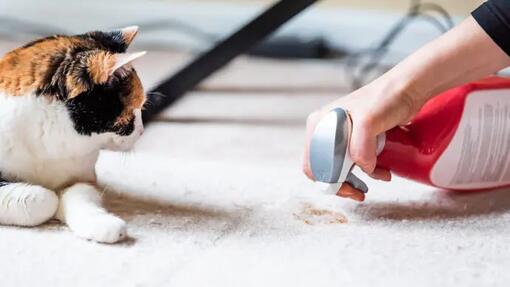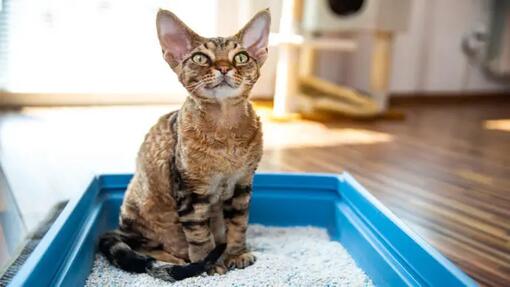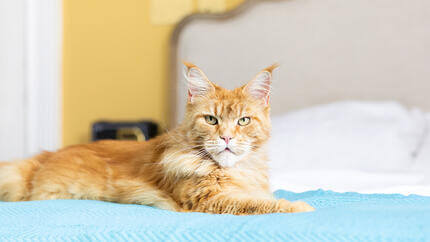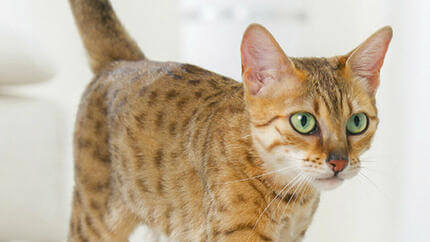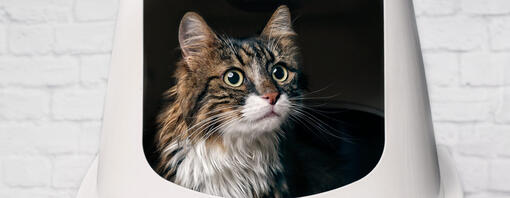

Incontinence in cats is a condition that’s most frequently observed in older felines. Just like with humans, when cats reach their senior years, it can be quite common for them to develop certain health conditions such as cognitive impairment and loss of muscle control that can lead to problems with defecating and urinating.
If your cat is leaking urine or seems to be having problems with defecating, it could be a sign of incontinence. Keep reading to find out what can cause this problem and the possible treatment methods.
What is incontinence in cats?
There are two types of incontinence in cats: urinary incontinence is the involuntary leaking of urine while faecal incontinence is involuntary defecation. It’s important to note that these two conditions are very different from certain behavioural issues which may make your cat go to the toilet where they shouldn’t.
These can include anxiety or stress, so in order to determine whether it’s actually incontinence or not, you should seek a diagnosis from your vet.
Causes of incontinence in cats
There are several causes of incontinence in cats ranging from old age to infections. The most common ones are listed below.
Old age
Senior cat incontinence is common because as they age the muscles around the urinary tract and bowels become weaker, giving cats less control over their bodily functions and making them unable to prevent accidents.
Spinal cord injury or disease
Spinal cord injury or disease can cause neurological issues which may interfere with the functioning of the urinary tract, bowels or intestines.
Cognitive impairment
Studies show that 80% of cats aged between 16 and 20 are affected by cognitive impairment. This can lead cats to become disorientated and forget where things—such as their litter tray—are. This may be the root cause of senior cat incontinence resulting in the cat urinating and defecating around the house.
Infections
Urinary tract infections are one of the biggest causes of urinary incontinence as they cause cats to urinate more often. Prolonged infections without treatment can also result in bladder scarring which can prevent cats from holding urine properly.
Diabetes
One of the symptoms of diabetes in cats is excessive urination and urination in large volumes, which can both be mistaken for symptoms of incontinence.
Rectal disease
Certain diseases and conditions that affect the intestines such as diarrhoea, inflammatory bowel disease and feline cancer can prevent stools from being held in or stored, leading to your cat consistently defecating without realising it.
Damage to the anal sphincter
If your cat has damage to their anal sphincter such as a lesion, wound or mass, they may not be able to keep the sphincter closed which can result in leaks. Additionally, if your cat has nerve damage, it may also affect the anal sphincter’s ability to function.
Symptoms of incontinence in cats
The symptoms of cat incontinence can vary greatly depending on the cause, but you may spot some of the following signs:
- Struggling and straining to urinate and/or defecate.
- Spots/trails of urine around the house as they may not notice that they’re urinating.
- Diarrhoea that’s hard to control, small volumes of stools may leak, or you might find balls of faecal matter.
- If the incontinence is due to anal sphincter damage there may be anal redness, swelling, or draining.
- Obsessive licking between the hind legs or the cat’s hindquarters.
- Nerve damage-related incontinence can affect their ability to walk and carry their tail.
- They may stop using the litter tray and instead go to the toilet in areas around the house.
If you spot any of the signs of incontinence in cats listed above, take your cat to the vet straight away for diagnosis and treatment.
Diagnosing incontinence in cats
A diagnosis will usually be made via a thorough physical exam where your vet will check the anal and urinary areas for signs of infections or damage. Faecal and urinary tests may be carried out alongside blood tests.
It’s also likely that your vet will perform a neurological exam where they’ll look for changes in walking and tail movement to determine whether the incontinence is linked to nerve damage. If they suspect the incontinence is nerve-related, they may also conduct radiographs and a CT or MRI scan. Additionally, if the problem seems to be gastrointestinal, an ultrasound examination might be carried out.
Treating incontinence in cats
The treatment for cat incontinence can vary greatly depending on the cause and symptoms, but your vet will be able to recommend the best possible treatment method for your feline.
Common treatment methods can include muscle stimulants to help your cat control their muscles. Dietary improvements may be recommended (particularly if the cat is overweight as this can aggravate some conditions such as diabetes), including a change in their fibre and protein profile, as well as adding pro/prebiotics to support digestive health. Incontinence linked to inflammation or infection may require antibiotics. Masses and nerve-related issues will likely require surgery.
Sadly, no treatment is currently available if the senior cat incontinence is related to cognitive impairment. Instead, you’ll need to help make your cat as comfortable as possible. It’s a good idea to purchase several litter trays with shallower sides and dot them around the house so that they will be easier for your pet to locate. Additionally, steps to help maintain their hygiene should be taken such as regular cat baths to clean faeces and urine out of their fur and to prevent issues with their skin. You should also keep their bedding clean and dry.
That’s our guide to incontinence in cats and the signs you should look out for. If you’re looking for more information on cats with special needs, read our guide on rehoming special needs cats next.
Related articles


